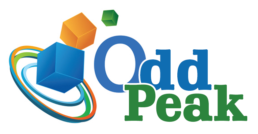The senior living industry is undergoing a dynamic transformation, driven by the increasing demand for high-quality, personalized care and streamlined operations. At the heart of this evolution is smart senior living management software—an integrated digital solution designed to enhance every aspect of senior care communities, from resident wellness to administrative efficiency.
With growing expectations from families and regulatory bodies, senior living facilities are being held to higher standards of service delivery and accountability. Traditional methods of managing operations, such as paper-based systems or disconnected software, often fall short in supporting the complex, real-time needs of these communities. Smart senior living management software bridges this gap by offering a centralized platform where administrators, caregivers, and support staff can collaborate more effectively.
One of the most significant benefits of such software is its ability to unify various operational functions under one system. From resident admissions and care planning to billing and compliance tracking, these platforms allow team members to access vital information instantly. This not only enhances coordination between departments but also ensures that caregivers can spend more time focusing on residents rather than paperwork.
Resident health and wellness are core priorities in senior living, and intelligent software plays a pivotal role in improving outcomes. Digital care plans, updated in real-time, give caregivers access to the most current information on each resident’s needs, medications, dietary preferences, and activity schedules. This level of personalization supports better decision-making, reduces errors, and fosters a higher standard of care that families and stakeholders can trust.
Moreover, predictive analytics and reporting features offer administrators valuable insights into performance trends. By identifying patterns such as medication compliance, staff productivity, or resident engagement, operators can make informed decisions that promote proactive care and operational excellence. This data-driven approach not only boosts quality but also helps in optimizing resources, reducing costs, and staying ahead of regulatory requirements.
Another advantage of adopting smart management systems is improved communication. Whether it’s notifying family members about resident updates or coordinating tasks among caregivers, built-in messaging and alert tools create a transparent environment where everyone stays informed. These features foster stronger relationships with residents and their families, building confidence in the services provided.
Staff satisfaction is also positively impacted by the implementation of smart management software. Automation of repetitive tasks and intuitive user interfaces reduce the administrative burden on caregivers and administrators alike. This not only saves time but also lowers the risk of burnout and turnover, helping facilities retain skilled professionals who are essential to delivering consistent, compassionate care.
Furthermore, mobile accessibility ensures that critical functions can be managed on the go, which is especially valuable for teams spread across large campuses or multi-site operations. Remote access allows for faster response times, easier management oversight, and better coordination across the board.
In conclusion, smart senior living management software is more than a technological upgrade—it is a strategic asset that transforms care delivery, boosts operational efficiency, and enriches the lives of residents and staff alike. By embracing intelligent systems tailored for the senior living sector, communities can rise to meet today’s challenges while building a stronger foundation for the future of aging care.


